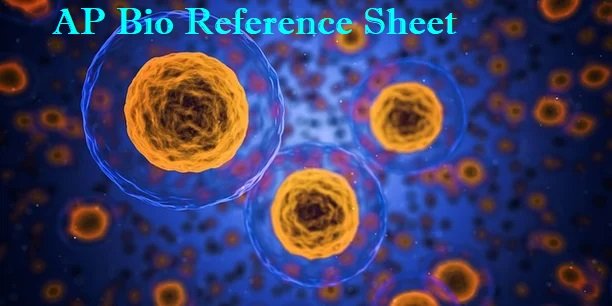Introduction
AP Biology is a challenging yet rewarding course that requires a solid understanding of biological concepts, processes, and scientific methods. An AP Bio reference sheet serves as an essential tool to summarize key concepts, helping students retain information efficiently. This comprehensive guide will outline critical AP Biology topics, including molecular biology, genetics, ecology, and physiology, all presented in an organized format.
Why Use an AP Bio Reference Sheet?
- Quick Revision Tool: Covers fundamental concepts for last-minute preparation.
- Improved Retention: Visual summaries aid memory recall.
- Time Management: Helps students focus on key concepts instead of lengthy textbooks.
- Exam Strategy: Enables students to organize complex information effectively.
Key Topics in AP Bio Reference Sheet
1. Biological Macromolecules
| Macromolecule | Monomer | Function | Example |
|---|---|---|---|
| Carbohydrates | Monosaccharides | Energy Storage | Glucose, Starch |
| Proteins | Amino Acids | Enzyme Function, Structure | Hemoglobin |
| Lipids | Fatty Acids, Glycerol | Cell Membranes, Energy | Phospholipids |
| Nucleic Acids | Nucleotides | Genetic Information | DNA, RNA |
2. Cell Structure and Function
| Organelle | Function |
| Nucleus | Contains DNA, controls cell functions |
| Mitochondria | Energy production through cellular respiration |
| Ribosomes | Protein synthesis |
| Endoplasmic Reticulum | Processes and transports proteins/lipids |
| Golgi Apparatus | Modifies and packages proteins |
3. Cellular Energy Processes
| Process | Location | Key Outcome |
| Photosynthesis | Chloroplast | Produces glucose and oxygen |
| Cellular Respiration | Mitochondria | Produces ATP for energy |
4. Genetics and Heredity
| Concept | Description |
| Mendelian Genetics | Study of dominant and recessive traits |
| DNA Structure | Double helix structure with base pairing (A-T, G-C) |
| Punnett Squares | Predicts genetic probability outcomes |
| Genetic Mutations | Changes in DNA sequence affecting traits |
5. Evolution and Natural Selection
| Theory | Key Concept |
| Darwin’s Theory | Natural selection favors advantageous traits |
| Adaptations | Traits improving survival and reproduction |
| Speciation | Formation of new species due to evolutionary changes |
6. Ecology
| Term | Definition |
| Ecosystem | Community of living organisms interacting with the environment |
| Food Chain | Linear flow of energy between organisms |
| Trophic Levels | Positions in a food chain based on energy flow |
| Biotic Factors | Living components of an ecosystem |
| Abiotic Factors | Non-living environmental components |
7. Human Body Systems
| System | Function |
| Circulatory System | Transports blood, oxygen, and nutrients |
| Nervous System | Controls body functions and responses |
| Digestive System | Breaks down food for nutrient absorption |
| Respiratory System | Facilitates gas exchange (oxygen & carbon dioxide) |
| Immune System | Defends against pathogens and diseases |
8. Scientific Practices and Lab Techniques
| Technique | Purpose |
| Gel Electrophoresis | DNA analysis and separation |
| PCR (Polymerase Chain Reaction) | Amplifies DNA sequences |
| Microscopy | Observing cellular structures |
| Spectrophotometry | Measuring light absorption for chemical analysis |
Exam Tips for Using the AP Bio Reference Sheet
- Organize Information by Themes: Group related topics to boost memory retention.
- Use Visual Aids: Diagrams, charts, and labeled illustrations enhance understanding.
- Practice with Past Papers: Applying the reference sheet in practice exams sharpens exam techniques.
- Focus on High-Yield Concepts: Prioritize frequently tested AP Biology topics for effective preparation.
Recommended Study Resources
To supplement your AP Bio reference sheet, consider using:
- Campbell Biology Textbook for detailed explanations.
- Bozeman Science Videos for visual learning.
- AP Biology Practice Tests available online for exam simulations.
Conclusion
An effective AP Bio reference sheet is essential for mastering complex biological concepts. By organizing key topics like cell structure, genetics, and ecology in tables and concise notes, students can enhance their learning experience and achieve better results in their AP Biology exam. Remember to practice regularly, focus on high-yield concepts, and use visual aids to solidify your understanding.
Disclaimer: This AP Bio reference sheet is intended for educational purposes only. While it covers key concepts for the AP Biology curriculum, students are encouraged to consult official AP resources for comprehensive exam preparation.
Read More Also: Bio Patch: A Detailed Guide to Its Benefits, Uses, and Future Applications

Leave a Reply